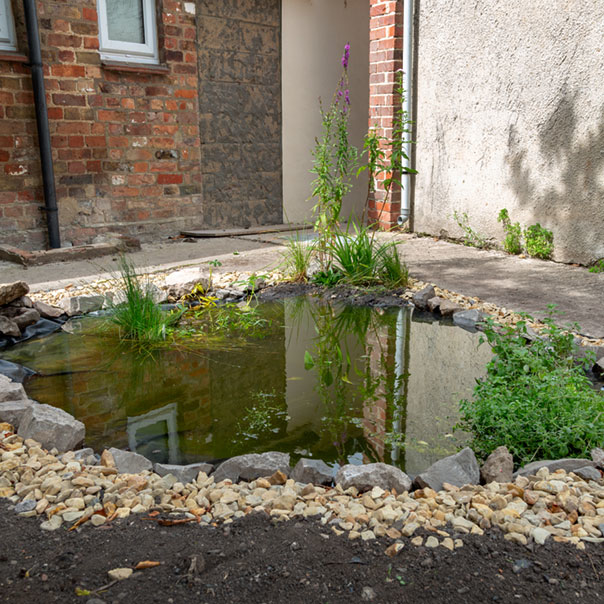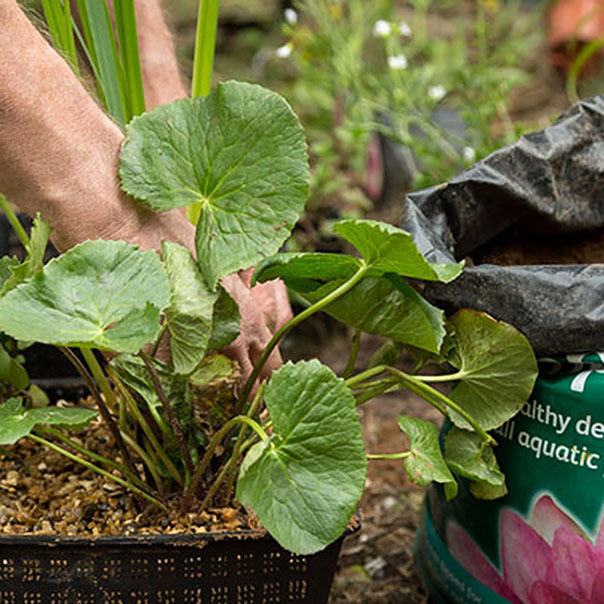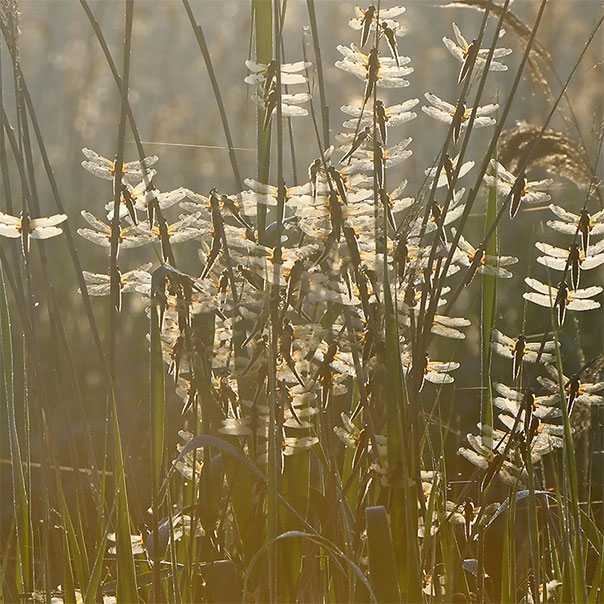Plants found in UK wetlands
Wetland trees
Willow
(Salix species)
Lovers of wet soils, willow trees appear in all shapes and sizes, from goat willow, to white willow, to weeping willow (a hybrid between two types of willow). Flowers appear as small yellow-grey catkins. On each tree, all flowers will be either male or female; willows are ‘dioecious’, meaning male and female flowers grow on separate trees. Between willow species, catkins vary in size, shape and colour but most appear in early spring.
Willow has been cultivated for centuries. Even today, it’s easy to find ‘pollarded’; willows, with branches removed at the top of the tree but the main trunk left standing, and the wood left to regrow.
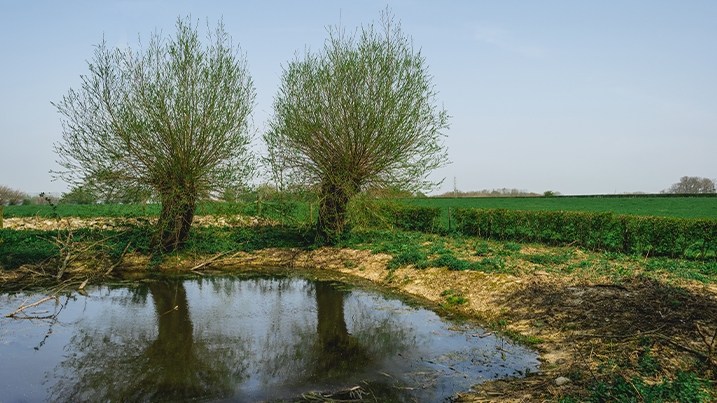
Alder
(Alnus species)
Another soggy-soil dweller is the alder and like the willow, its catkins appear in early spring. However, alder is ‘monoecious’, meaning male and female flowers are found on the same tree. The male catkins are pendulous and yellow, whereas the female catkins are oval-shaped and green.
Along with willow, it’s a very water tolerant tree that makes up the wetland habitat of carr woodland.
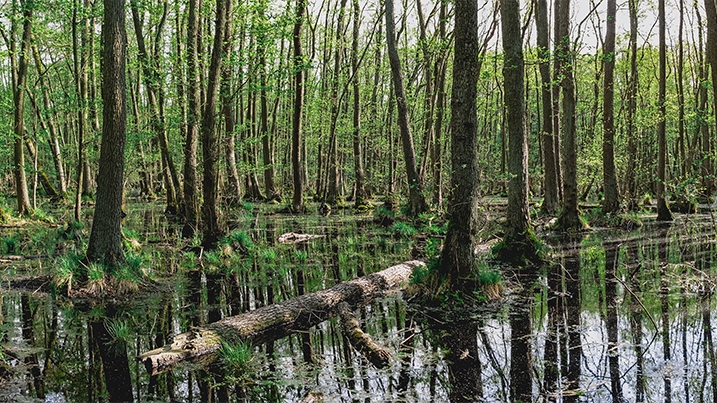
Birch
(Betula species)
Birch trees are more widespread across habitats than alder and willow, although they can be found in the same damp woodland. Like Alder, both male and female catkins are found on the same tree but usually appear a little later, from April.
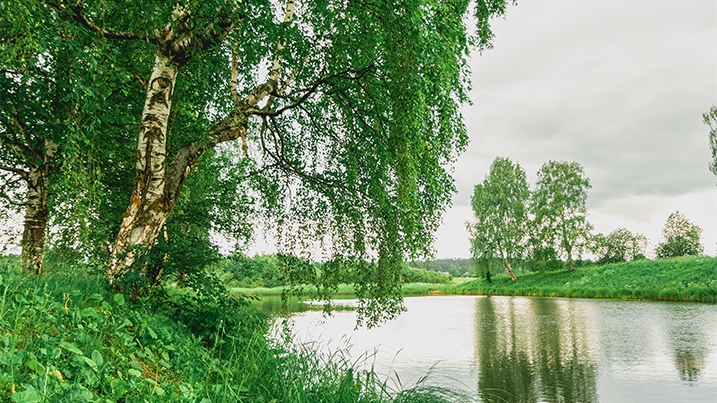
Poplar
(Populus species)
Poplars are another tree species that is at its happiest when growing near water. Our native black poplar is now rare due to loss of habitat, but can be identified by its near-black bark and heart-shaped leaves.
White poplar is native to the Mediterranean, but is naturalised in the UK and can often be found growing near water. It can be distinguished from the black poplar by its irregular-edged leaves, which are dark green on top with light green undersides.
On both species, male and female flowers are found on separate trees.
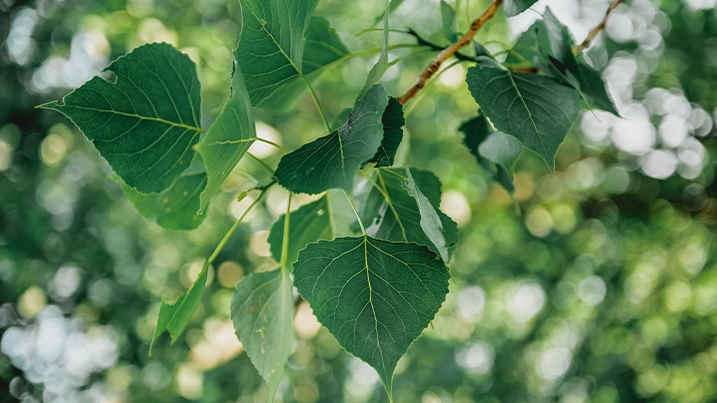
Wetland plants
Marsh marigold
(Caltha palustris)
Found in ponds and ditches, the marsh marigold flowers throughout spring. Look out for the large yellow flowers of ‘kingcups’, as they signpost themselves to pollinators.
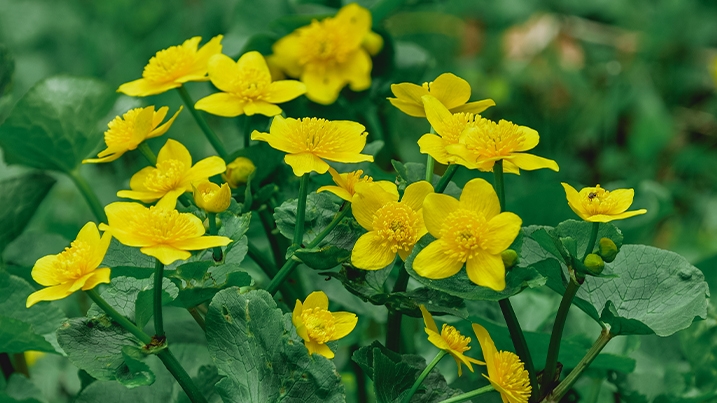
Cuckooflower
(Cardamine pratensis)
The pink petals of the cuckoo flower appear across wet grassland in April and May. This plant got their name from the flowers appearing at the same time as the bird is first heard. They’re a key food plant for orange tip butterflies, which lay their many eggs on the plant stems. As well as eating the plant, the caterpillars are cannibalistic so there will eventually be just one on each plant.
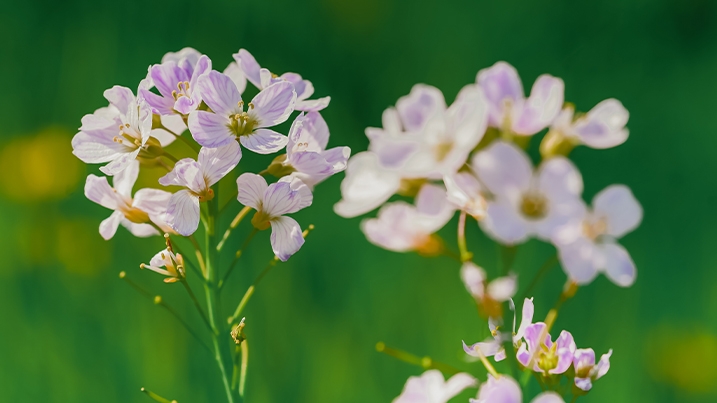
Ragged robin
(Lychnis flos-cuculi)
In damp meadows and along riverbanks, you can find ragged-robin; bright pink flowers of multiple petals attracting both humans and insects. They flower throughout late spring into summer.
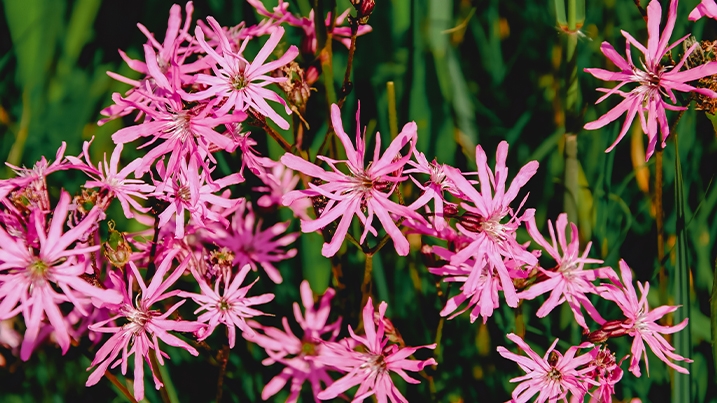
Purple loosestrife
(Lythrum salicaria)
One of the brightest and most widespread plants, purple loosestrife covers wetland habitats with towers of purple right through to late summer. Their square stems can reach up to 1.5 metres in height. These species are bog plants and thrive on wetland edges, halfway between the wet and the dry.
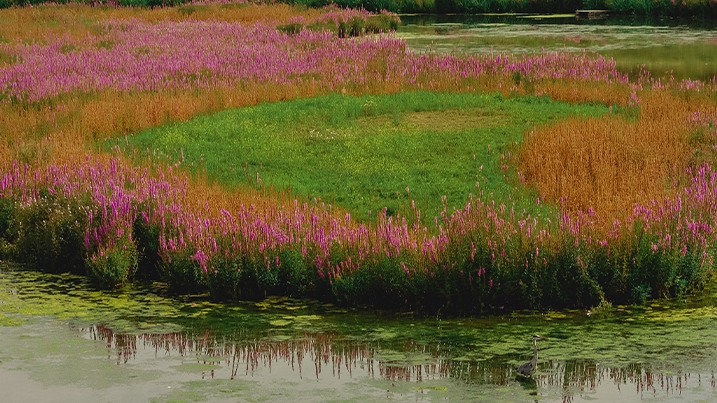
Orchids
Wet habitats provide a great place to see Southern marsh orchid (Dactylorhiza praetermissa), with flowers varying in shade from light pink to dark purple. In similar habitat, you might also see common spotted (Dactylorhiza fuchsii) and early marsh orchids (Dactylorhiza incarnata), and come across the pyramidal orchid (Anacamptis pyramidalis) in dryer grassland.
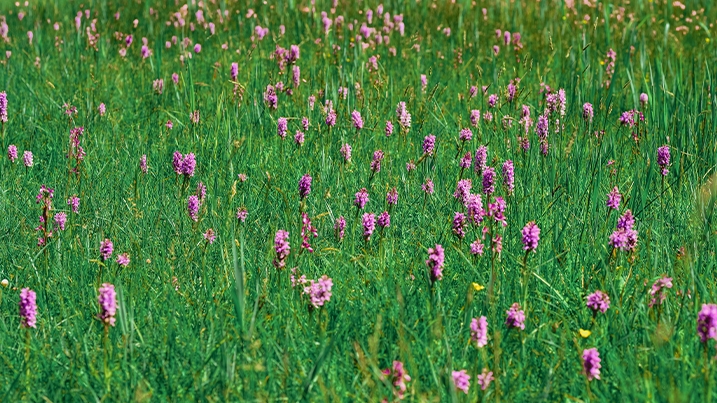
Meadowsweet
(Filipendula ulmaria)
Flowering throughout summer in damp meadows, meadowsweet is a tall-stemmed plant with creamy clusters of flowers. Take a sniff and you’ll understand why it is so named.
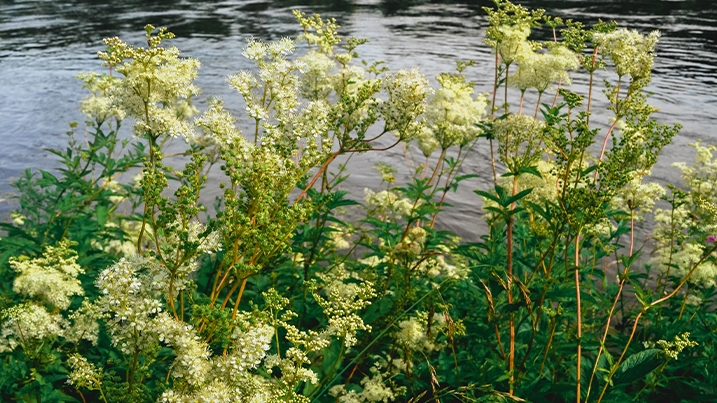
Great reedmace
(Typha latifoli)
Another staple of wetlands in summer is great reedmace, towering around wetland margins. At this time of year it is in flower, the unmistakeable cylindrical brown heads emerging above the green-grey leaves. Most of this is the female flower; look closely and you’ll spot the small, feathery male flowers on top. In winter, the heads start to lose their seeds as they blow in the wind, becoming feeding spots for small birds such as reed bunting.
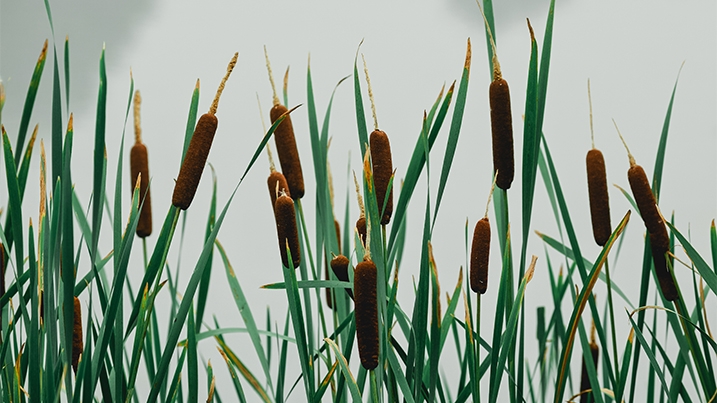
Flowering rush
(Butomus umbellatus)
High on your wetland plant priorities for summertime should be flowering rush. Look out for its long, pointed, grass-like leaves, topped with small pink flowers. It stands along the water’s edge and although it looks like other rushes, it’s not actually a member of that family.
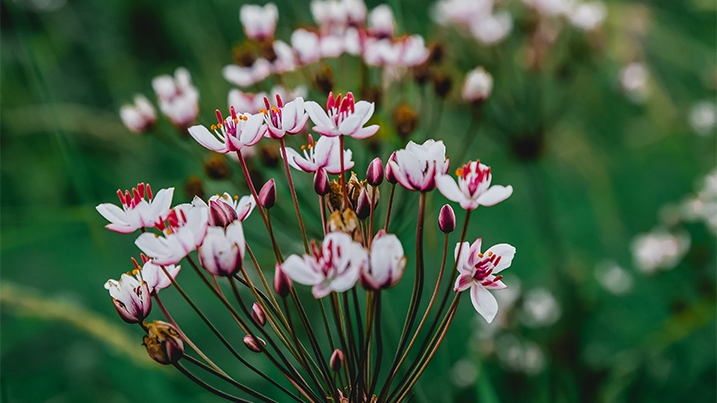
Hemp agrimony
(Eupatorium cannabinum)
Another summer flowerer, hemp-agrimony is so-named in a similar way to the flowering rush, getting its name from its leaves looking like hemp, but in fact it too is unrelated. You can find it in many damp areas but you won’t be the first. Many pollinators are attracted to its pink and white flowers. This is where its other name, ‘raspberries and cream’ comes from; clusters of frothy flowers atop red stems.
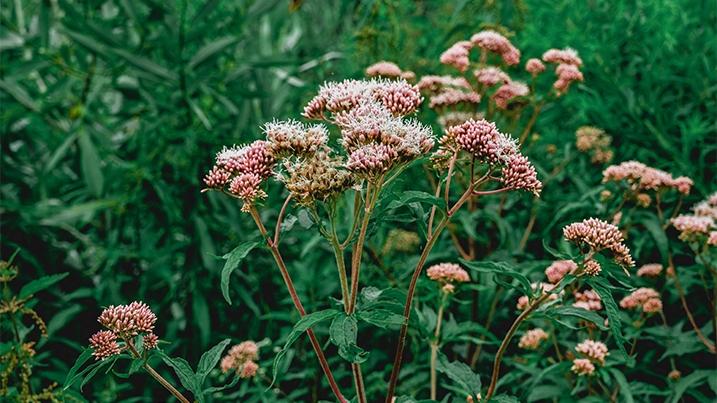
Common fleabane
(Pulicaria dysenterica)
Come late summer, the bright yellow of common fleabane can be spotted flowering in many damp places. Look out for its chrysanthemum-like flower and hairy, wrinkled leaves. As its name suggests, in the past it was dried and used in homes to drive away insect pests.
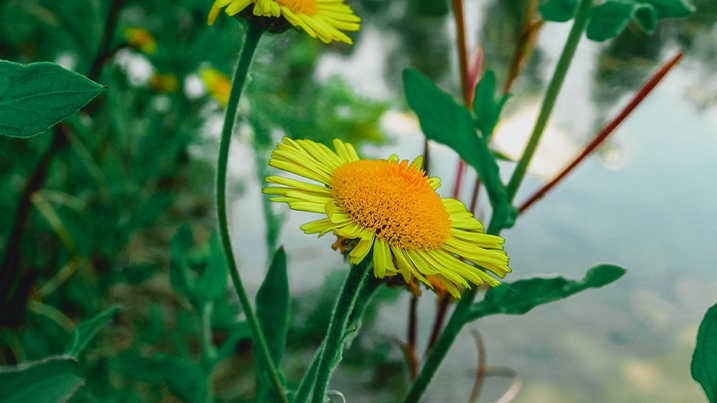
Devil’s-bit scabious
(Succisa pratensis)
Another late flowerer, devil’s-bit scabious can be found around stream banks and damp meadows. Its rounded, purple flowers resemble a pin-cushion. It’s so named as they have very short roots; legend tells that the Devil bit the roots off in anger at the plant's medicinal properties.
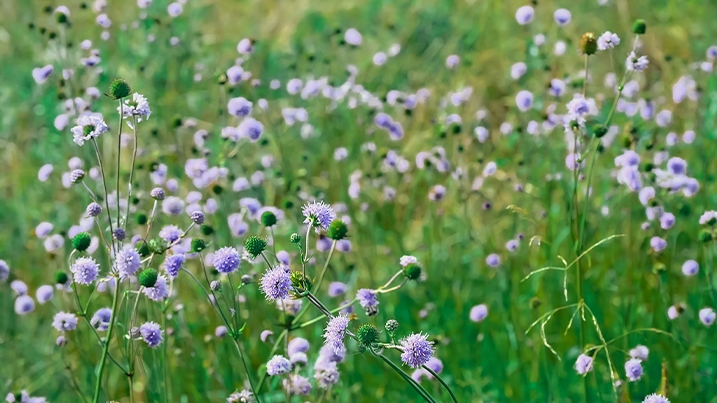
Native pond plants
Water plantain
(Alisma plantago-aquatica)
Found in pond margins, this plant has large, oval shaped leaves and tall stems displaying small, white flowers, attracting pollinators.
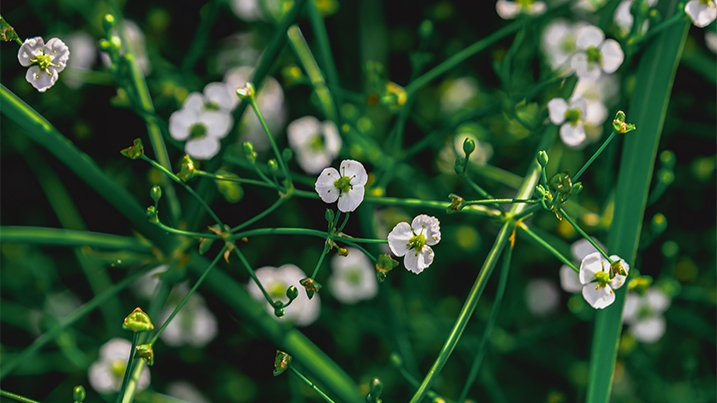
Blooklime
(Veronica beccabunga)
In summer, this evergreen plant has spikes of gentian-blue flowers with white centre-streaks. It grows in shallow streams but thrives in boggy soil at the water’s edge. Its creeping stems and fleshy leaves provide egg-laying sites for dragonflies and it attracts pollinators, too.
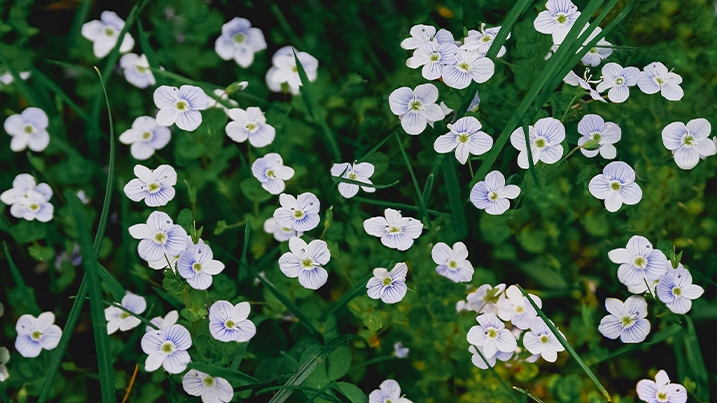
Lesser spearwort
(Ranunculus flammula)
This marginal plant bears pretty, yellow buttercups from May to August. Found at the pond’s edge, its sprawling nature provides cover for wildlife in and around the water, while its blooms attract pollinating insects.
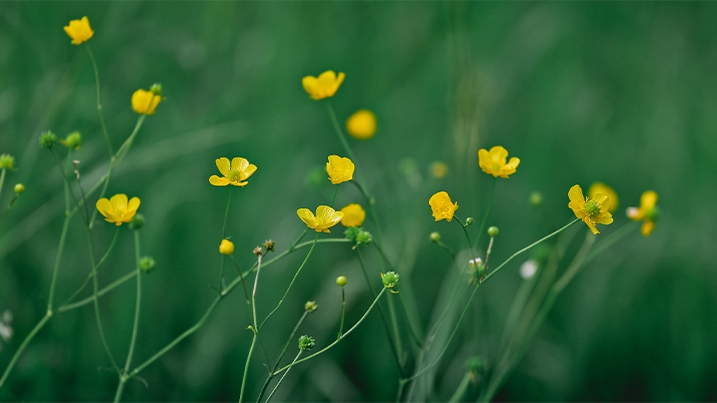
Bogbean
(Menyanthes trifoliata)
This pretty plant has spikes of pink-tipped, white flowers with lacy fringes and three-lobed leaves. It forms mats that are good for dragonflies and will grow to spread outwards.
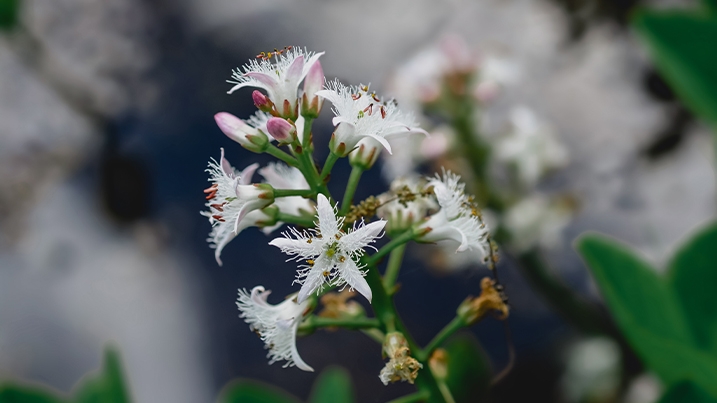
Frogbit
(Hydrocharis morsus-ranae)
Found on the surface of still ponds, the leaves of this free-floating plant look like tiny waterlily leaves that have been ‘bit’ on one side by frogs. In summer, a succession of white flowers appears. During winter, the buds lie dormant in the bottom mud.
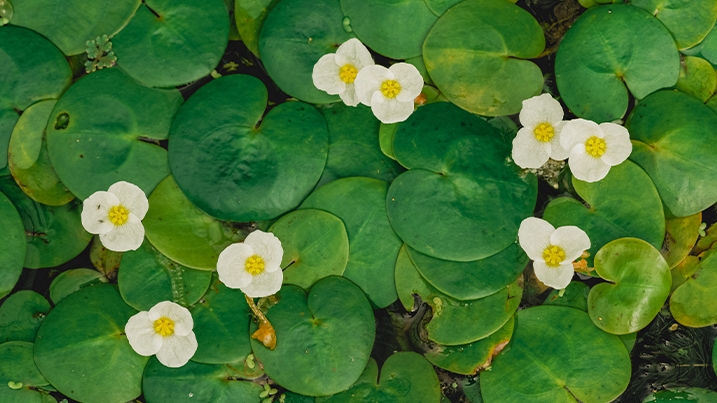
White waterlily
(Nymphaea alba)
At up to 20cm wide, this floating bloom is our largest native flower. Its leaves can reach the size of dinner plates. Growing in water up to 1.5m deep, it provides shelter for frogs and early nectar for insects.
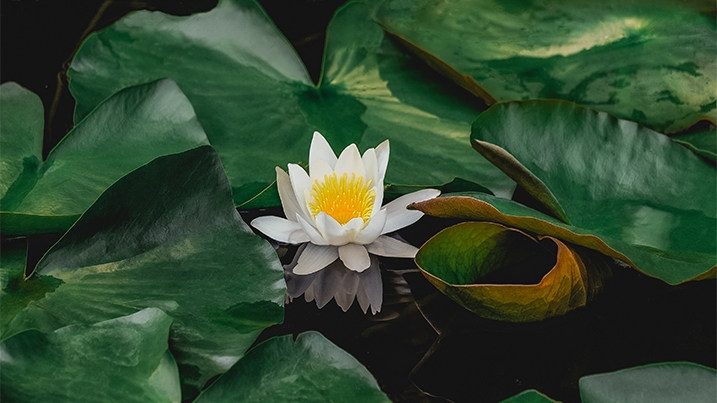
Rigid hornwort
(Ceratophyllum demersum)
Looking like a delicate conifer but growing totally submerged, this oxygenating native is free floating and rootless, with stems reaching 3m long. Leaves grow in whorls, with minute flowers.
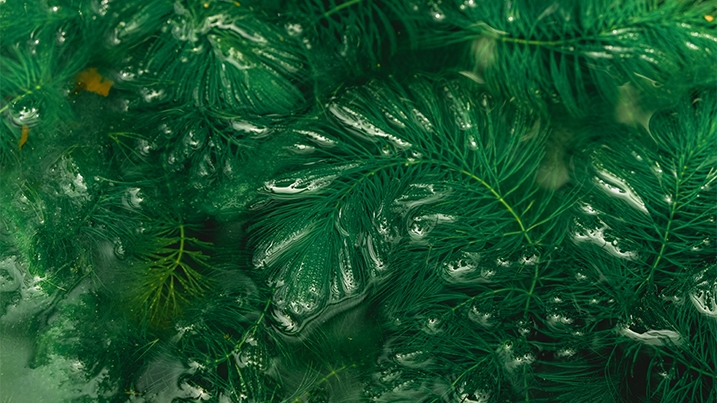
Yellow iris
(Iris pseudacorus)
The ‘yellow flag’ is a native water iris, happy in wet habitats and found growing at the edges of large, sunny ponds. It forms clumps of sword-like leaves with rich golden flowers loved by bees. It cleans water by removing metals through its roots.
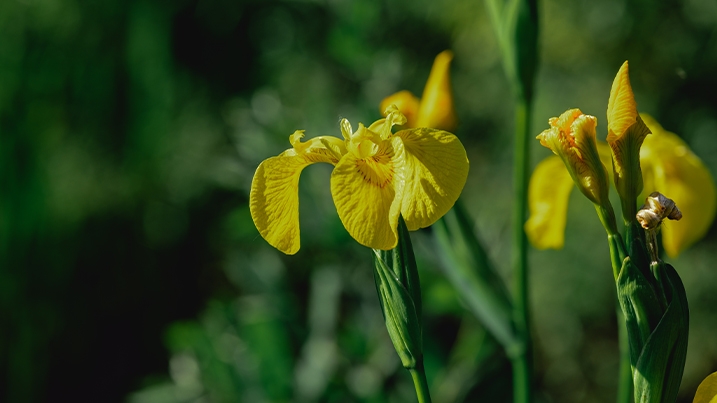
Water soldier
(Stratiotes aloides)
The rare water soldier shelters aquatic insects in ponds and still, open water. In spring, gas-filled, spiny leaves grow underwater and pop up at the surface, looking like the top of a pineapple. In summer, it produces white flowers.
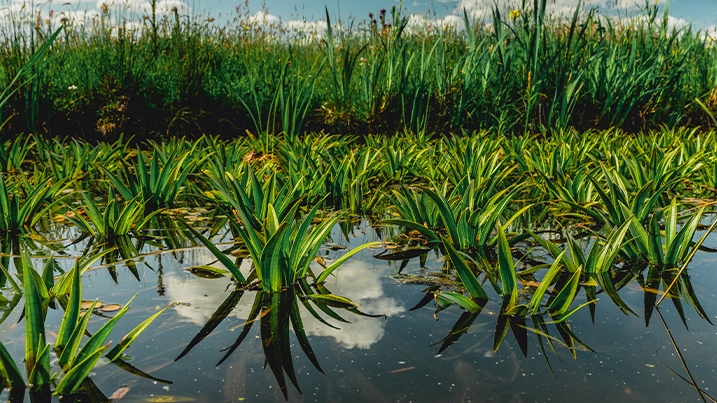
Water mint
(Mentha aquatica)
A wonderfully sensory plant with aromatic leaves and spherical, lilac flowers in the summer, attracting pollinators. It will spread vigorously and can cover large areas of a pond or stream bank.
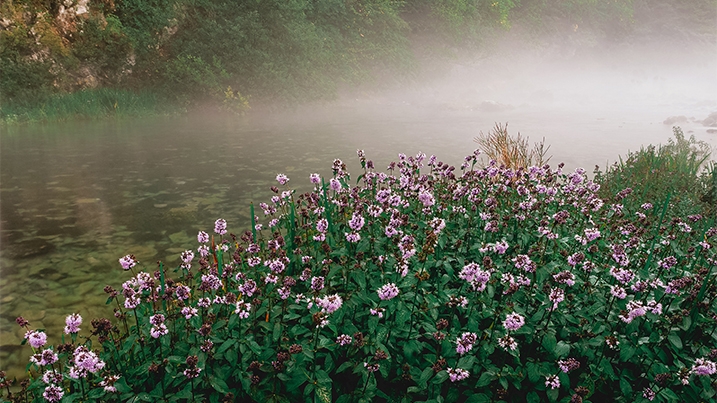
Water violet
(Hottonia palustris)
Like a primrose growing up out of the water, with just the flowering spike showing, water violet bears white or lilac blooms with mustard centres. The evergreen submerged leaves are rosettes of soft, feathery fronds.
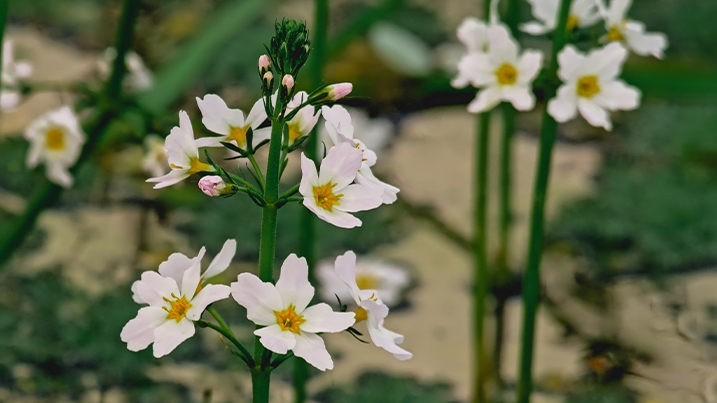
Common water-crowfoot
(Ranunculus aquatilis)
This beautiful oxygenator grows long strands of feathery fronds under the water, with a profusion of dainty white flowers above in early summer. It loves slow-moving streams, but also grows well in still water.
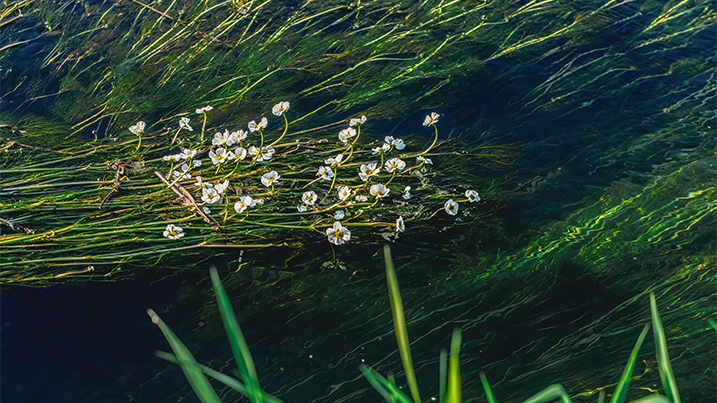
Water forget-me-not
(Myosotis scorpioides)
This is the aquatic version of the familiar sky-blue flower with yellow centres. Bees and hoverflies visit the flowers, newts use the leaves to enfold their eggs, and tadpoles find shelter.
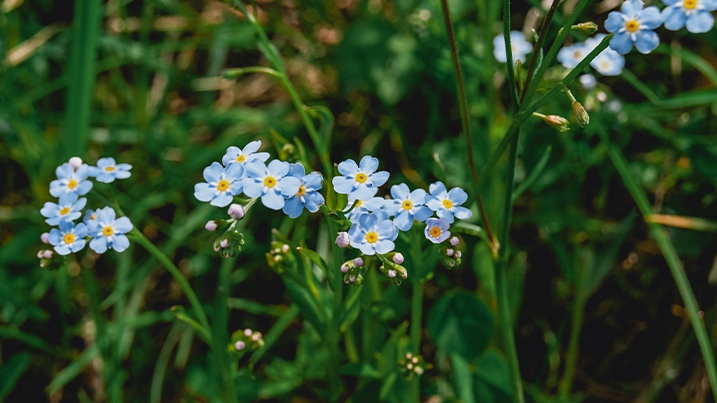
How WWT are helping
For hundreds of years, UK wetlands have been drained for agriculture, resulting in a loss of habitat for many species. We’re working to restore wetlands on a national scale, and you can help with our campaign for 100,000 hectares of new wetlands. Many wetland plants are adaptable species, simply needing space to thrive. Our wetland sites are a great place to explore wetland plants and trees.
Find your nearest WWT site